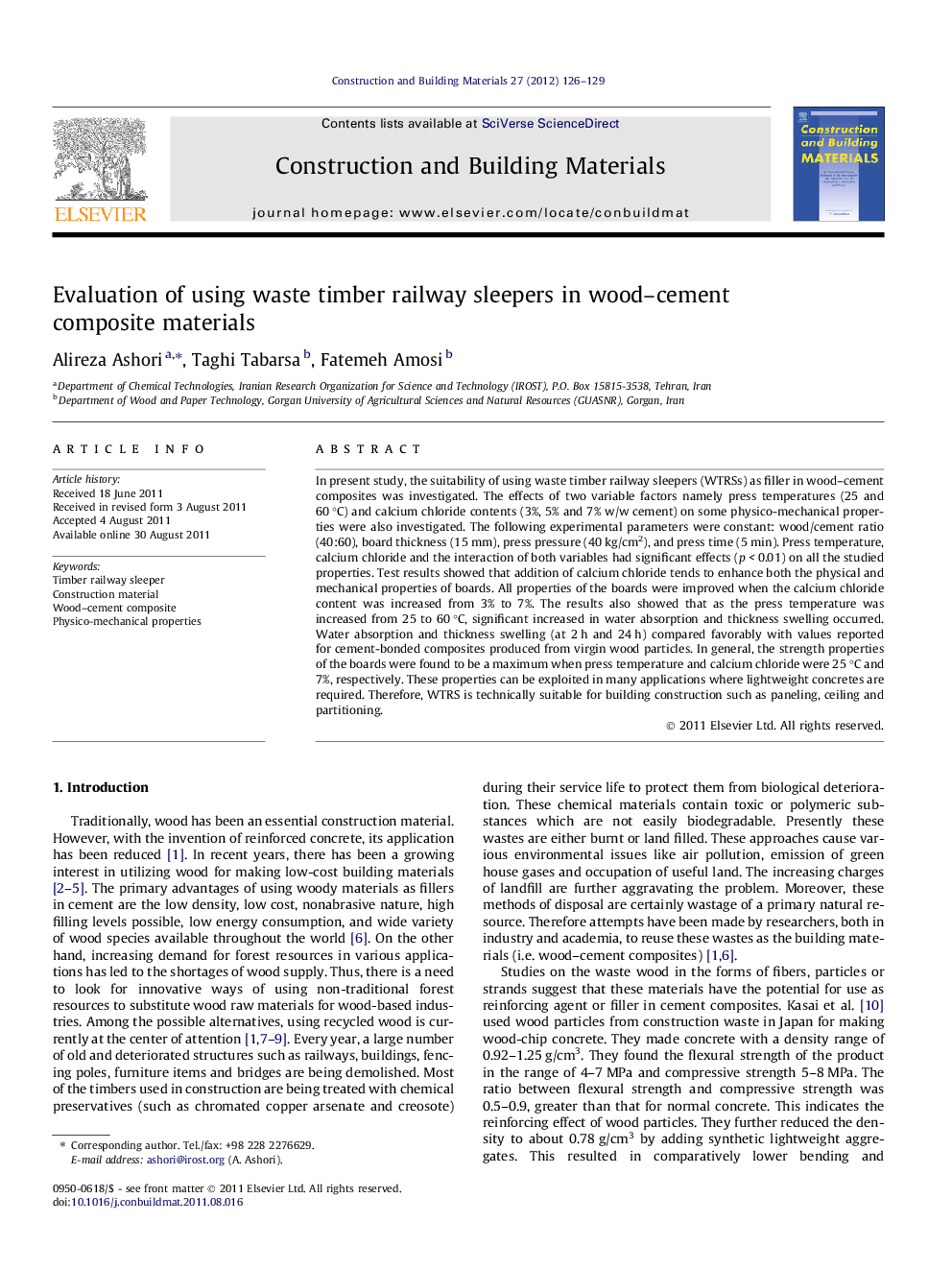| کد مقاله | کد نشریه | سال انتشار | مقاله انگلیسی | نسخه تمام متن |
|---|---|---|---|---|
| 259340 | 503632 | 2012 | 4 صفحه PDF | دانلود رایگان |

In present study, the suitability of using waste timber railway sleepers (WTRSs) as filler in wood–cement composites was investigated. The effects of two variable factors namely press temperatures (25 and 60 °C) and calcium chloride contents (3%, 5% and 7% w/w cement) on some physico-mechanical properties were also investigated. The following experimental parameters were constant: wood/cement ratio (40:60), board thickness (15 mm), press pressure (40 kg/cm2), and press time (5 min). Press temperature, calcium chloride and the interaction of both variables had significant effects (p < 0.01) on all the studied properties. Test results showed that addition of calcium chloride tends to enhance both the physical and mechanical properties of boards. All properties of the boards were improved when the calcium chloride content was increased from 3% to 7%. The results also showed that as the press temperature was increased from 25 to 60 °C, significant increased in water absorption and thickness swelling occurred. Water absorption and thickness swelling (at 2 h and 24 h) compared favorably with values reported for cement-bonded composites produced from virgin wood particles. In general, the strength properties of the boards were found to be a maximum when press temperature and calcium chloride were 25 °C and 7%, respectively. These properties can be exploited in many applications where lightweight concretes are required. Therefore, WTRS is technically suitable for building construction such as paneling, ceiling and partitioning.
► Waste railway sleepers had significant effects on the physicomechanical properties.
► Mechanical properties generally decreased with increase in press temperature.
► Maximum strength properties were obtained with 25 °C press temperature and 7% CaCl2.
Journal: Construction and Building Materials - Volume 27, Issue 1, February 2012, Pages 126–129